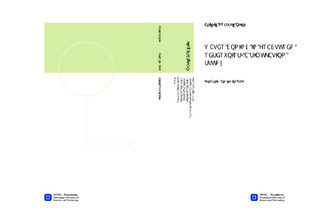WATER CONING IN FRACTURED RESERVOIRS: A SIMULATION STUDY
Master thesis
Permanent lenke
http://hdl.handle.net/11250/239895Utgivelsesdato
2012Metadata
Vis full innførselSamlinger
Sammendrag
Water coning is a complex phenomenon that depends on a large number of variables which include among others: production rate, perforation interval, mobility ratio, capillary pressure, etc. Its production can greatly affect the productivity of a well and the reservoir at large. In fractured reservoirs, the phenomenon is more complex owing to the high permeability of the fractures in the porous media. With this complexity in mind, water coning behaviour in fractured reservoir was studied by simulating a reservoir supported by a strong aquifer using ECLIPSE-100 Black-Oil Simulator. The water cut (WCT), oil production rate (OPR) and water saturation (BWSAT) at the producing interval (Block 1, 1, 7) were used to evaluate the coning phenomenon in a fractured reservoir. In the course of the study, sensitivity analyses on the modelled reservoir s anisotropy ratio (kv/kh), production rate (q), storativity capacity (ω), fracture width (b) and fracture permeability (kf) were conducted to evaluate their effect on coning behaviour in fractured reservoir. The results obtained depict that while the anisotropy ratio is very significant in water cut and water saturation at the perforating interval it has no adverse effect on oil production rate. It was however, observed that the water cut and oil production rate decreased as the production rate (q) increased. Furthermore, the water cut, oil production rate and water saturation (BWSAT) from the fractured reservoir is sensitive to the storativity capacity (ω) depending on the fracture porosity (φf). Conversely, the fracture s width (b) and permeability (kf) have no significant effect on the coning behaviour of the modelled fracture reservoir. However, anisotropy ratio (kv/kh), production rate as well as storativity capacity (ω) are significant parameters in evaluating coning phenomenon in fractured reservoirs.
